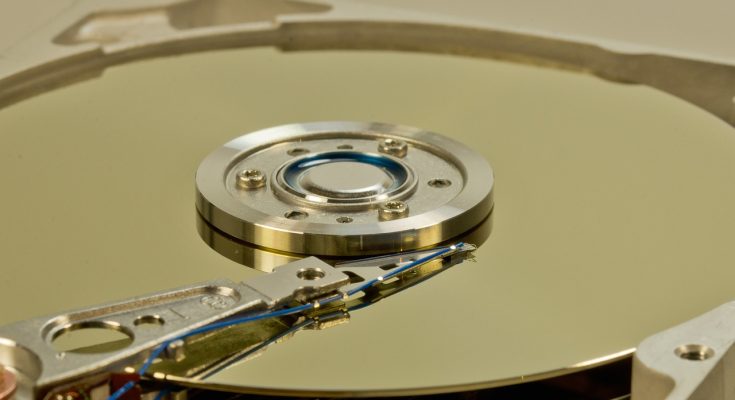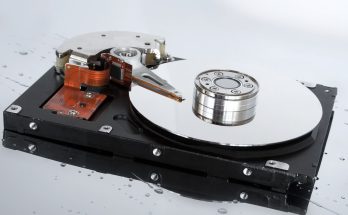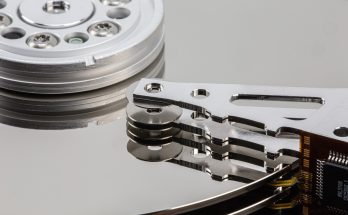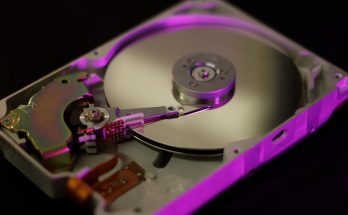Did you know RAID 1 can double your storage? But, you can only use half of it. It mirrors data, keeping it safe even if one drive fails. Knowing how to recover RAID 1 data at home is key to saving your important files.
This article will teach you about RAID 1. You’ll learn its benefits and when to use it. We’ll cover why data loss happens and what to do right away. With the right tools and steps, you can recover RAID 1 data well. Knowing how to do this helps keep your data safe.
Understanding RAID 1 and Its Benefits
RAID 1 is great for keeping your data safe. It makes copies of your data on two or more drives. This keeps your data safe and working well, even if one drive breaks.
What is RAID 1?
RAID 1 is like mirroring your data. It writes the same data on two drives. This makes sure your data is safe, even if one drive fails.
Advantages of Using RAID 1
- Fault Tolerance: RAID 1 keeps working even if one drive fails.
- Improved Read Performance: It lets you read data from multiple drives at once, making it faster.
- Simplicity: RAID 1 is easy to set up and manage, unlike other RAID types.
- Redundancy: It’s a simple way to keep your data safe, perfect for important files.
Common Use Cases for RAID 1
Many people and companies use RAID 1 for different needs. Here are some examples:
- Keeping financial data safe and available.
- Backing up small databases that need to stay online.
- Protecting personal photos and videos at home.
- Helping transactional systems and email servers run smoothly.
| Feature | RAID 1 | RAID 0 | RAID 5 |
|---|---|---|---|
| Data Redundancy | Yes | No | Yes |
| Minimum Drives Required | 2 | 2 | 3 |
| Read Performance | Good | Best | Good |
| Write Performance | Average | Best | Average |
| Use Case | Data protection | Speed | Balanced redundancy and performance |
Why Data Loss Occurs in RAID 1 Arrays
Learning about RAID 1 data loss can help you avoid problems. RAID 1 arrays are meant to keep your data safe. But, they can fail for many reasons. Let’s look at why data loss happens in these systems.
Mechanical Failures
Mechanical problems are a big reason for disk failure. RAID 1 uses two drives, so both can fail at once. Issues like spindle problems and drive wear can happen.
If both disks fail at the same time, you could lose all your data. It’s important to know about these risks to keep your data safe.
Accidental Formatting
Accidentally formatting drives is a big danger. RAID 1 is meant to protect your data, but mistakes can cause big problems. If you format drives without backups, you might lose your data forever.
Fixing RAID 1 after a formatting mistake is hard. You might need special tools and help to get your data back.
Controller Failures
Controller failures can stop you from getting to your RAID 1 data. These failures can be because of bad firmware or hardware problems. A broken controller can make it hard to get your data back.
Knowing about controller problems can help you plan how to get your data back if something goes wrong.
| Cause of RAID 1 Data Loss | Description | Preventive Measures |
|---|---|---|
| Mechanical Failures | Issues like spindle problems or disk wear affecting functionality of one or both drives. | Regular maintenance checks and monitoring of drive health. |
| Accidental Formatting | Unintentional formatting can lead to permanent data loss despite redundancy. | Implement strict protocols for drive management and ensure backups. |
| Controller Failures | Electrical or firmware issues in the RAID controller disrupting data access. | Stay updated on firmware and monitor controller performance. |
Steps to Initiate RAID 1 Recovery
When RAID 1 fails, it’s scary. But, taking the right steps is key to save your data. Follow these steps for a smooth recovery and to avoid risks.
Do Not Panic: Immediate Actions Post-Failure
Stay calm after losing data. Here’s what to do first:
- Don’t write new data to the drives. It might cover up data you can get back.
- Turn off the RAID array to stop more damage or data loss.
- Watch for error messages or strange sounds from the drives. They can help find the problem.
- Backup any data you can reach. It’s a safety step for later tries.
Identifying the Cause of Failure
Knowing why your RAID 1 failed helps plan how to fix it. Look at physical signs and error messages. Check these:
- Make sure all drives are connected right and turned on.
- Look at the RAID controller’s status lights. They show if a drive failed.
- Run tests on the drives if you can. They help find physical problems or failures.
By following these steps, you’re better prepared to recover your data. Being patient and careful can really help get your data back.
Tools and Software for RAID 1 Recovery
Getting data back from a RAID 1 setup needs the right tools and software. You can pick from free or paid options. Also, using hardware tools can help a lot in getting your data back.
Free and Paid RAID Recovery Software Options
When picking RAID recovery software, think about free and paid choices. EaseUS Data Recovery Wizard Pro has a 99.7% recovery rate. It’s a top pick for RAID users. DiskInternals RAID Recovery can rebuild an array from hard disks, working with RAID 1 and more.
Free tools are good for simple recovery tasks. But, paid tools like EaseUS offer more features. They support RAID setups like RAID 0 and RAID 5. You can also try out a read-only preview before buying.
Hardware Tools for Recovery
Good hardware is as important as software for RAID data recovery. Tools like disk clone devices and SATA to USB adapters help access RAID disks. It’s smart to clone both drives before using recovery software to avoid losing data.
Using the right hardware can really help in getting your data back. RAID Recovery™ software works with many Windows versions. It supports RAID formats like ZFS and NTFS. Getting good RAID recovery tools and software increases your chances of getting your data back.
Performing RAID 1 Recovery at Home
When you lose data in a RAID 1 setup, you can fix it at home. It’s key to do it carefully to get your data back. Start by cloning disks and using special software to get your data.
Creating Disk Clones for Safety
First, make disk clones to keep your original drives safe. This step stops more damage. Cloning lets you work on copies, not the real disks.
Use good disk cloning software. This keeps your RAID array safe. It makes the recovery safer.
Using Software to Recover Data from RAID 1 Array
After cloning, use software to get your RAID 1 data back. Tools like EaseUS Data Recovery Wizard Pro and Disk Drill are great. They scan the clones and get your files back.
EaseUS says it can recover 99.7% of your files. Start by picking how to scan. You can scan the whole RAID or just one drive. Remember, you need at least one working drive to recover.
Conclusion
Trying to fix RAID 1 data problems at home can work well. You need the right tools and knowledge. Knowing how RAID 1 keeps your data safe is key.
It’s important to watch out for things that might damage your data. This includes mechanical problems or mistakes. This way, you can keep your data safe.
Following the steps to fix RAID problems can really help. Using the right software makes it easier. Being ready for issues like power problems or accidental changes is important.
At-home solutions can save you a lot of time. They help keep your important data safe. This means you can handle any data problem that comes up.
Using tools like DiskInternals RAID Recovery can give you peace of mind. RAID 1 is becoming more popular for keeping data safe. Having good ways to fix problems makes you more confident in your storage.
FAQ
What is RAID 1 recovery?
RAID 1 recovery is a way to get back data lost from a RAID 1 array. It’s for mirroring data, so you can always get to your data, even if one drive breaks.
What are common causes of data loss in RAID 1 arrays?
Data loss in RAID 1 arrays can happen for many reasons. Drives can fail, disks can get formatted by mistake, or the controller can stop working.
What tools can I use for RAID 1 data recovery?
You can use free or paid software for RAID 1 recovery. Tools like Runtime GetDataBack and Diskinternals RAID Recovery work well. You also need hardware like disk clone devices and SATA to USB adapters.
How do I initiate the recovery process after RAID 1 failure?
Stay calm and don’t write new data to the drives after a RAID 1 failure. First, find out why it failed by checking error messages and the drives themselves. Then, start the recovery.
Can I perform RAID 1 recovery at home?
Yes, you can do RAID 1 recovery at home with the right tools and plan. Make sure to clone disks first to keep the original data safe before using recovery software.
What should I do first after experiencing data loss in RAID 1?
First, don’t write anything to the drives to avoid losing more data. Then, check for any error messages or physical problems with the drives.
What are the advantages of using RAID 1 for data storage?
RAID 1 makes reading data faster and more reliable. It mirrors data on multiple disks, so you can always access your data, even if a disk fails.
What is the importance of data loss prevention in RAID 1 setups?
Preventing data loss is key in RAID 1 setups. It helps avoid losing data due to hardware failures or mistakes. Being proactive with checks and maintenance helps keep your data safe.



